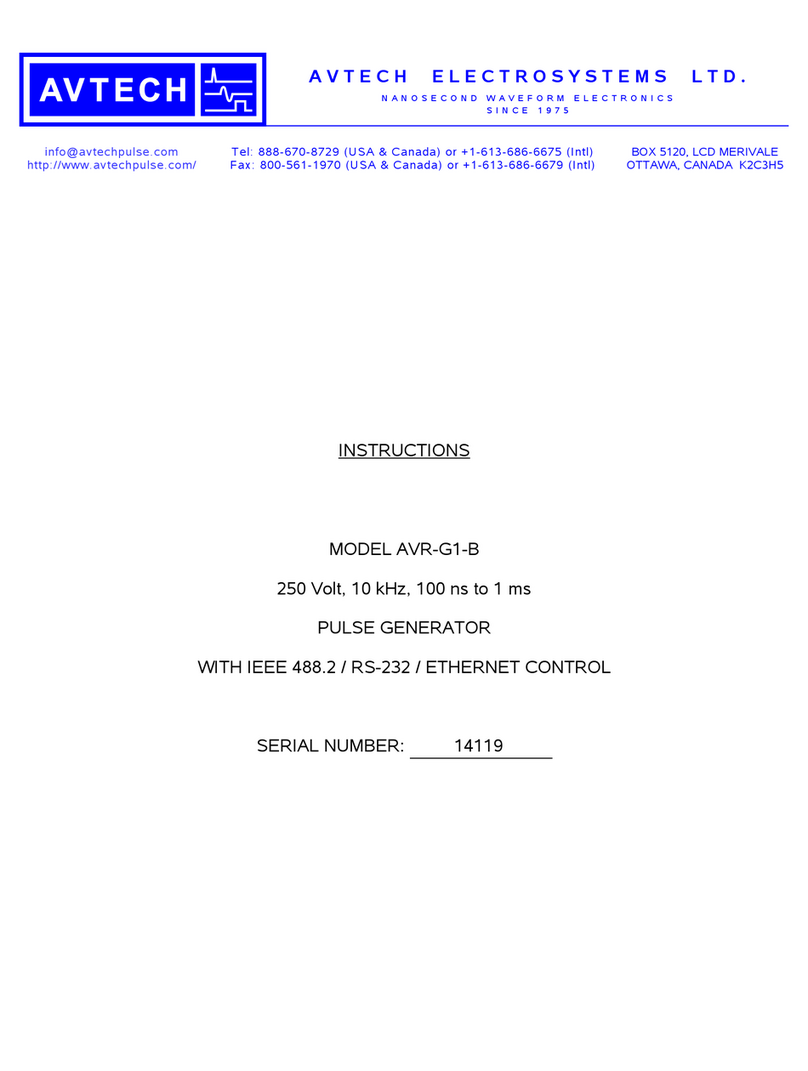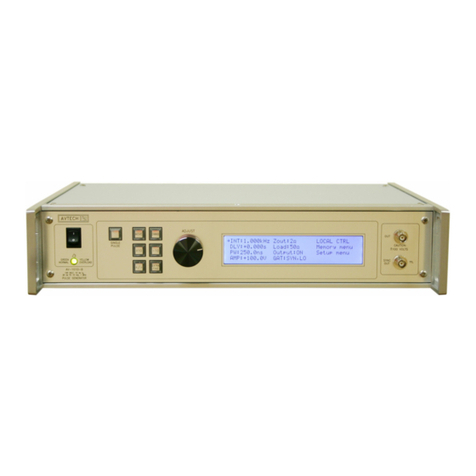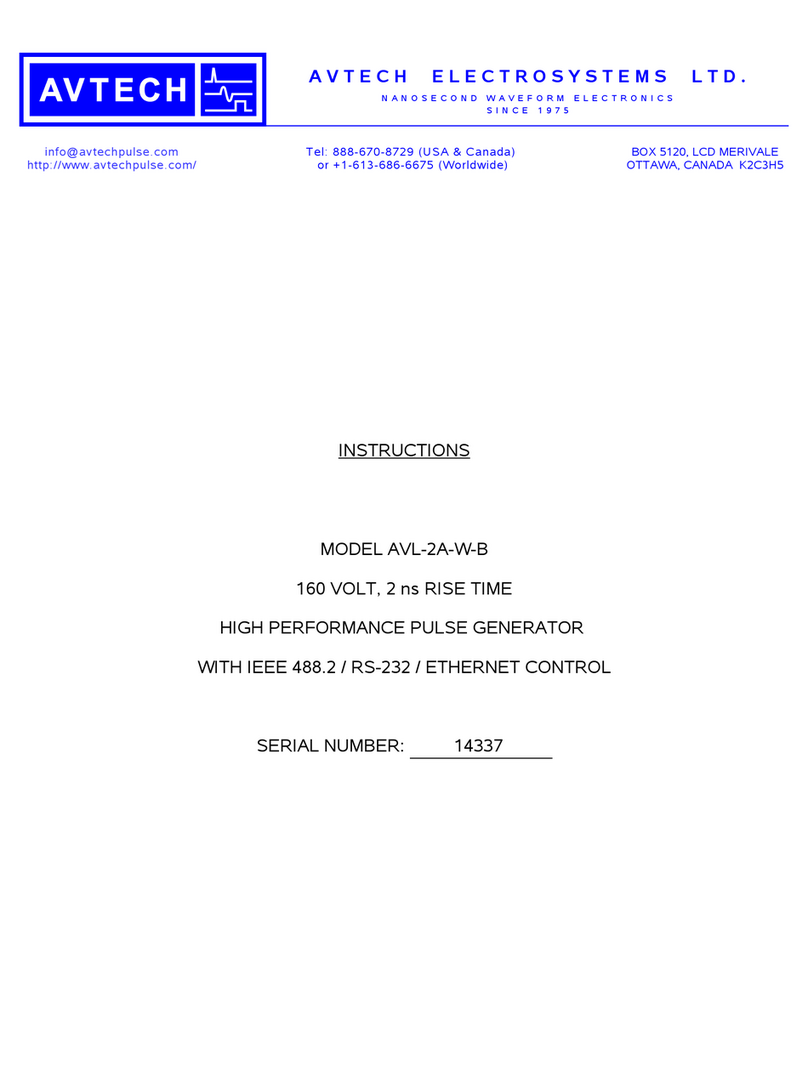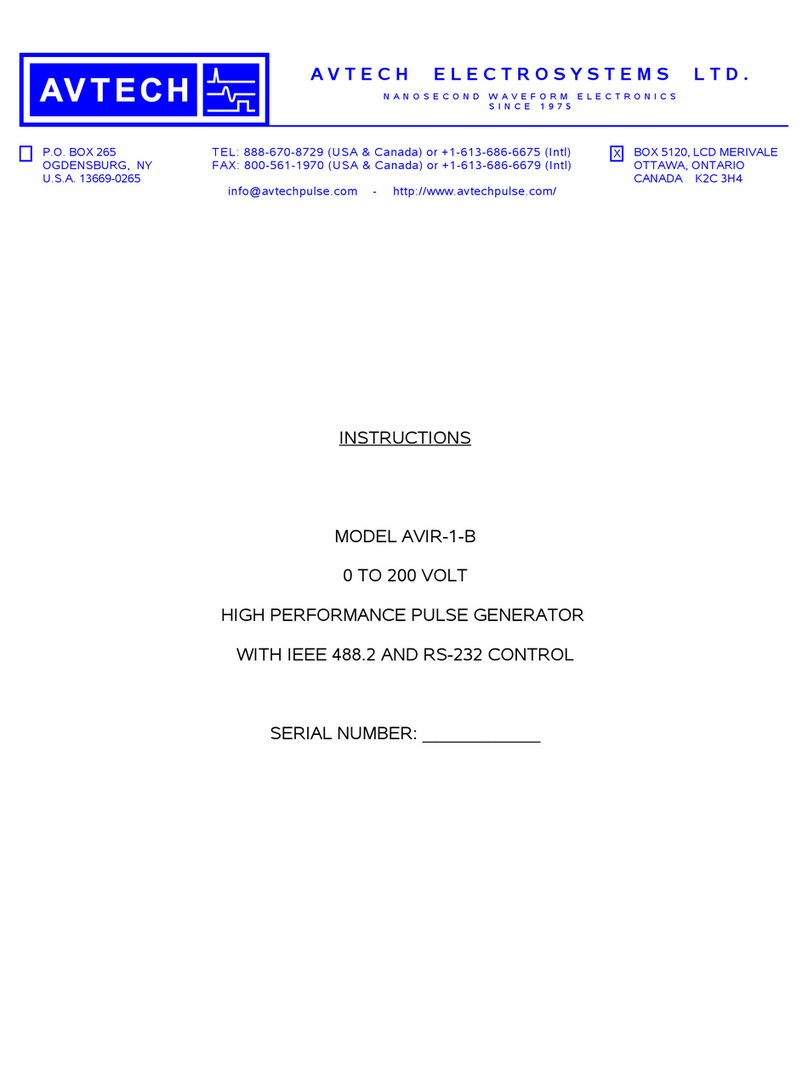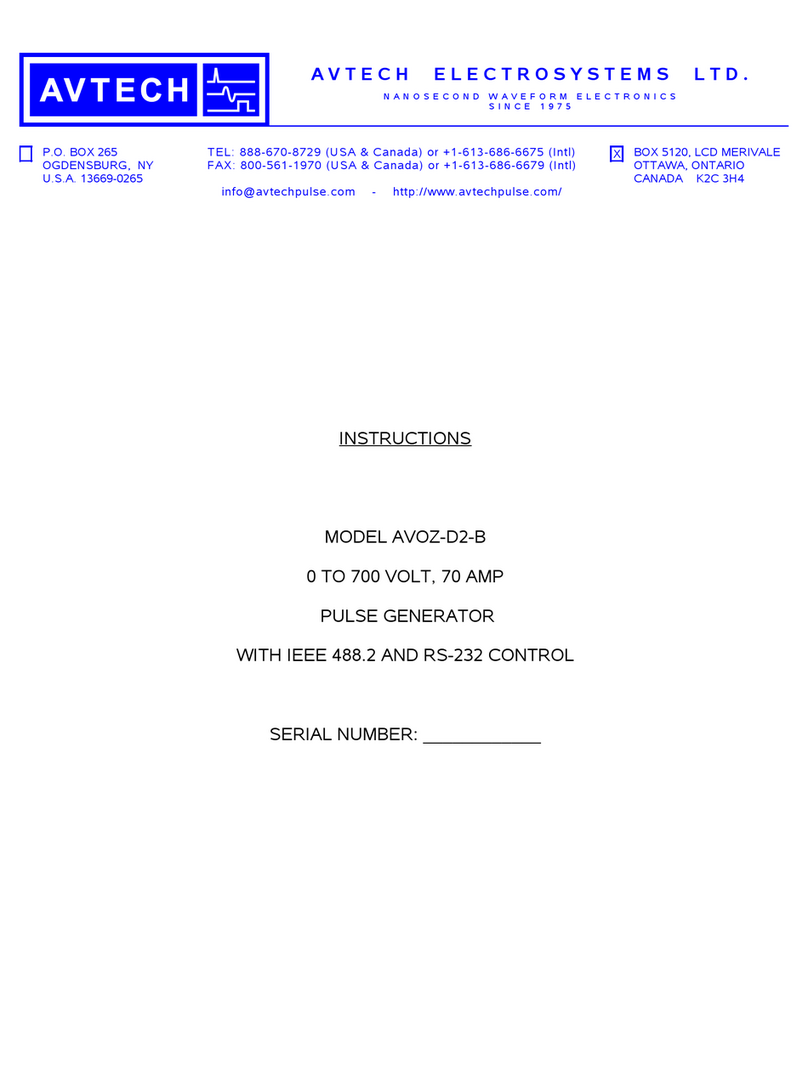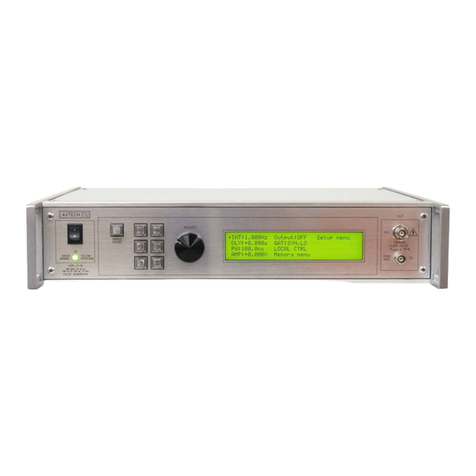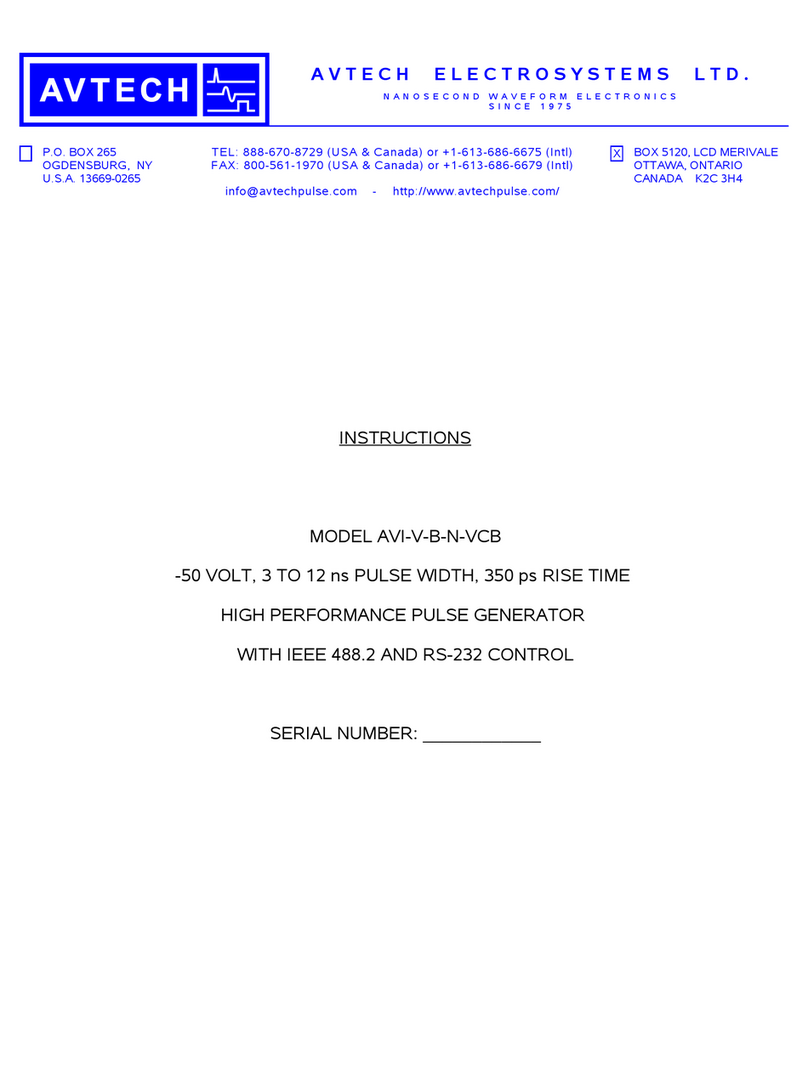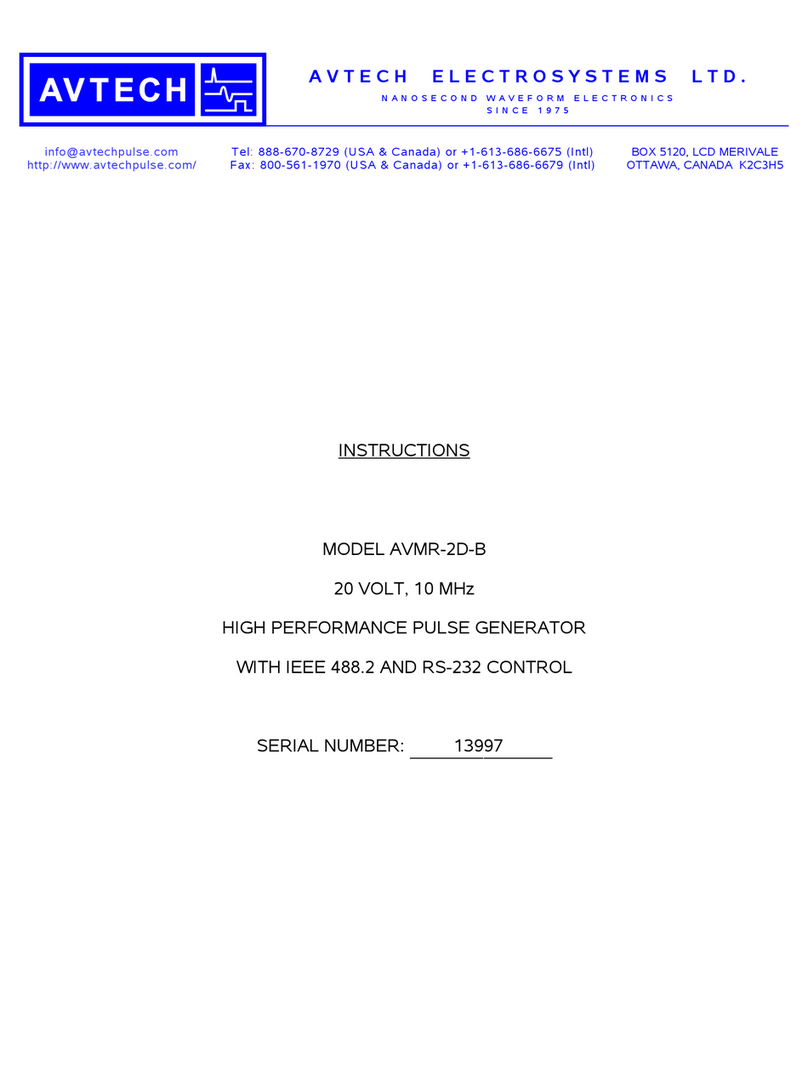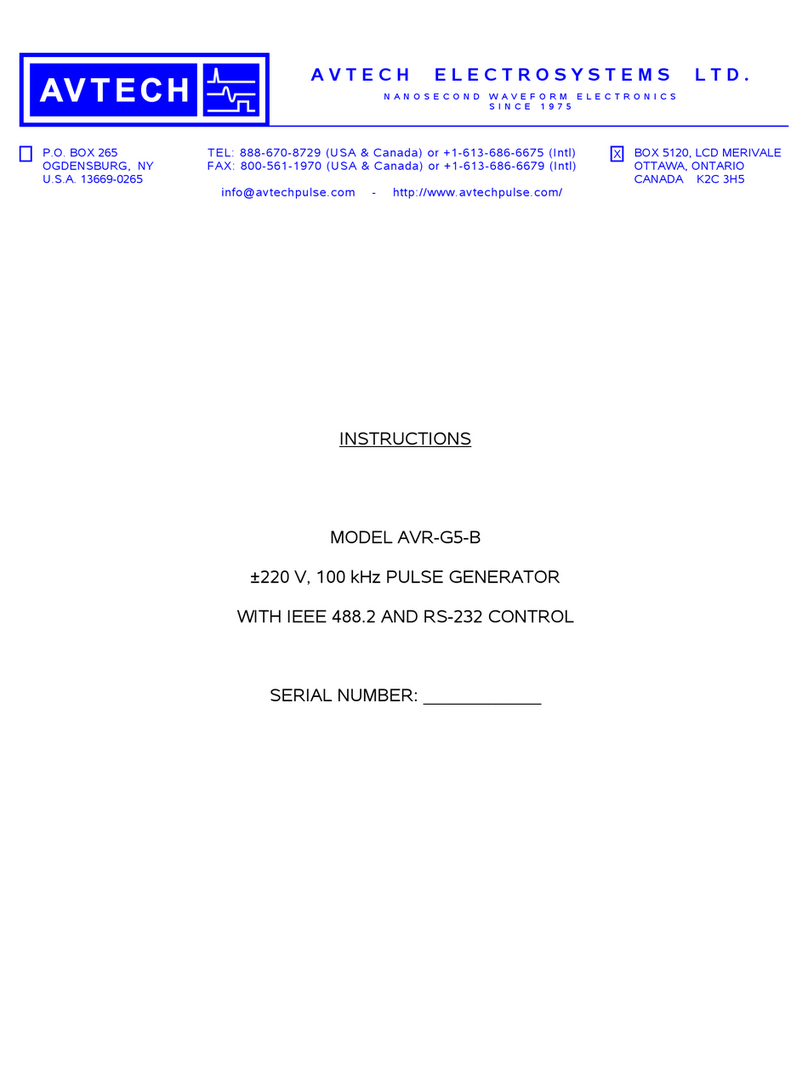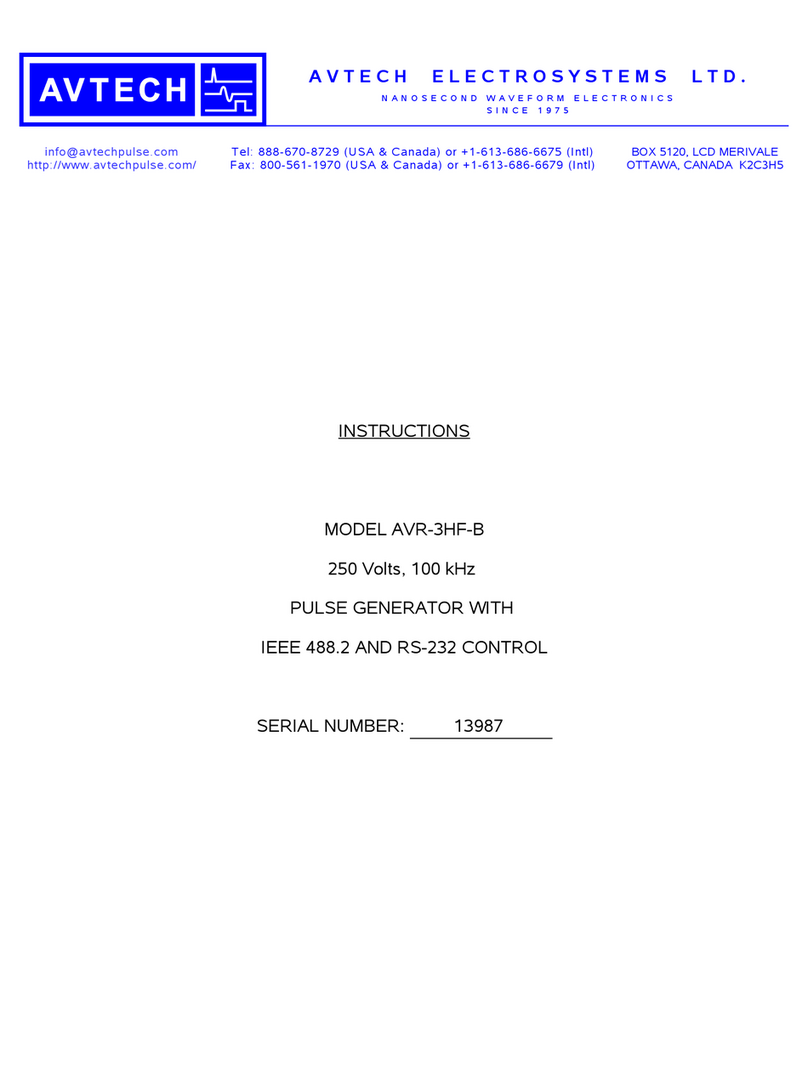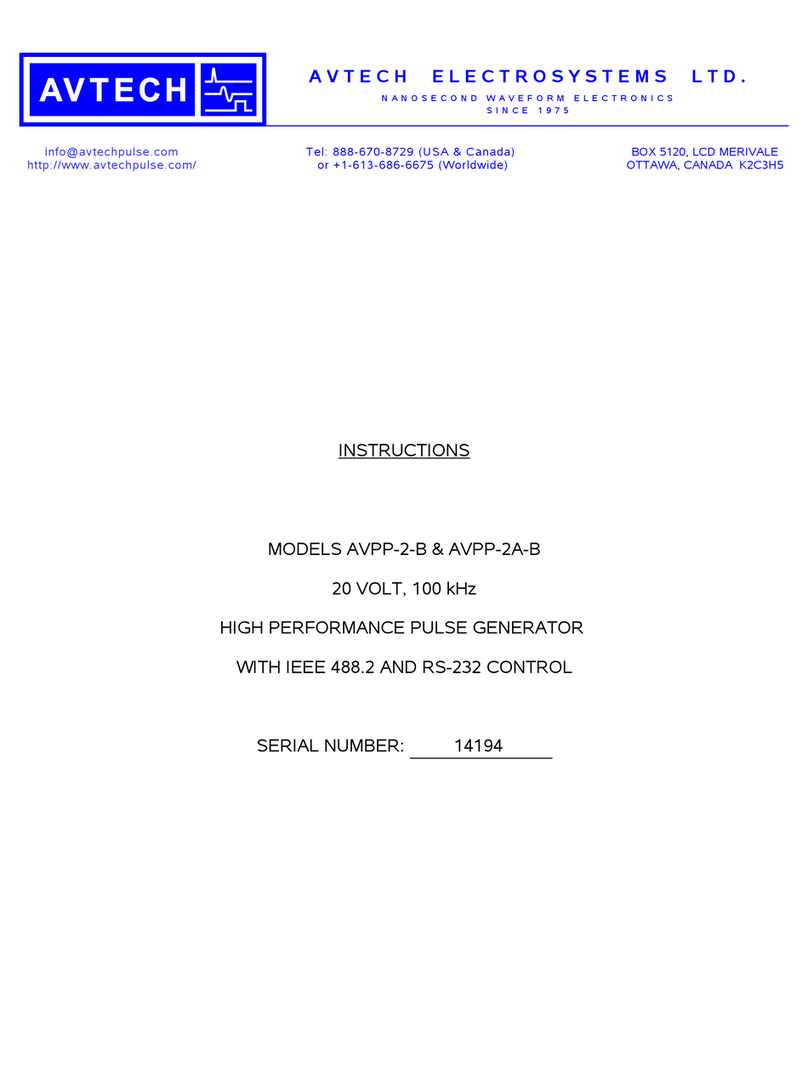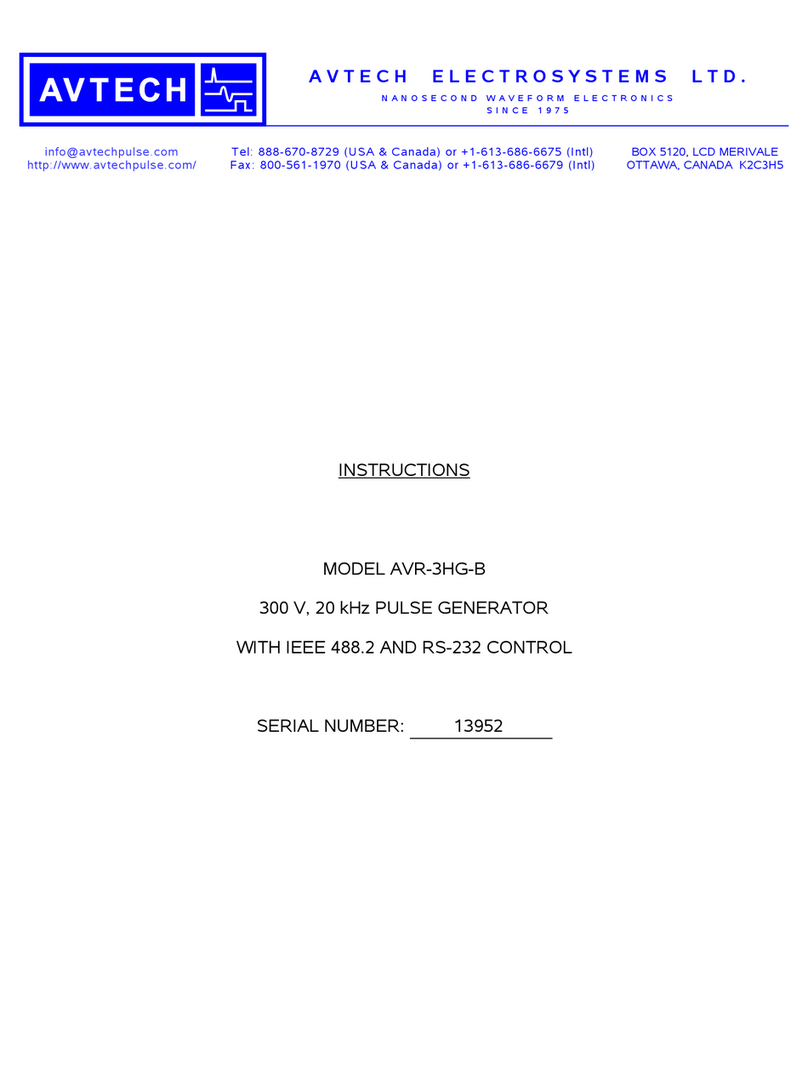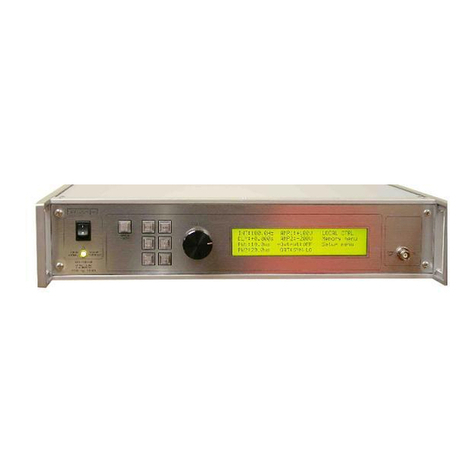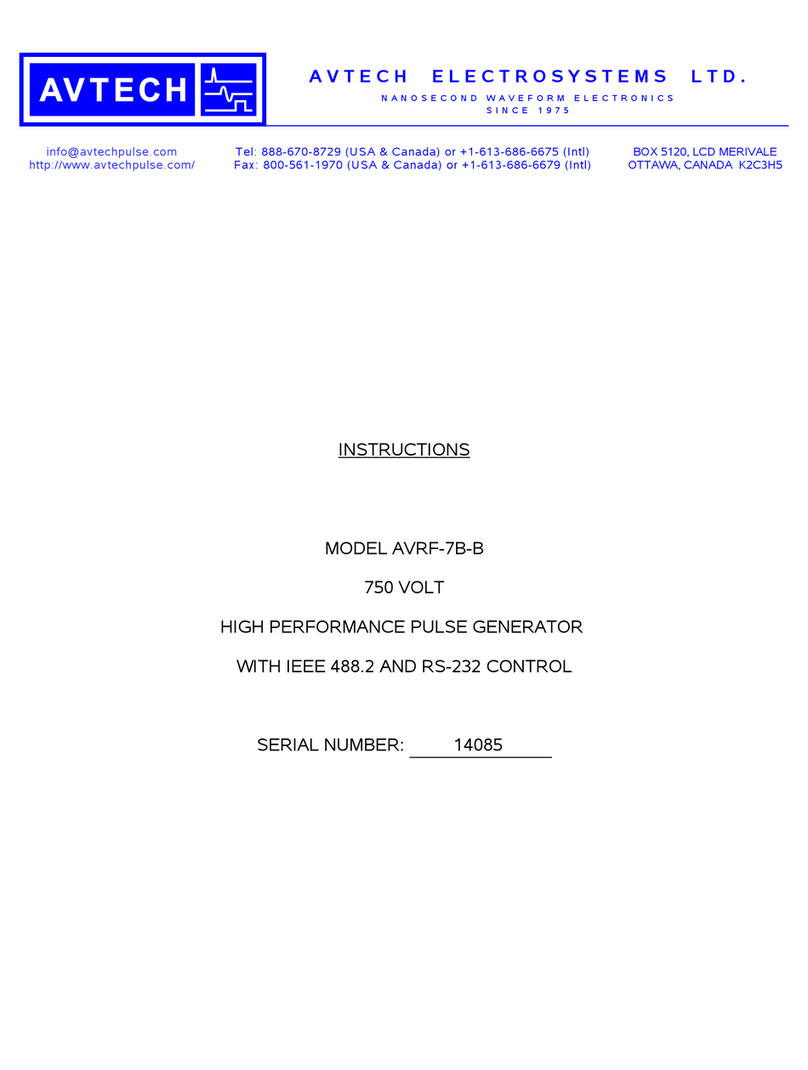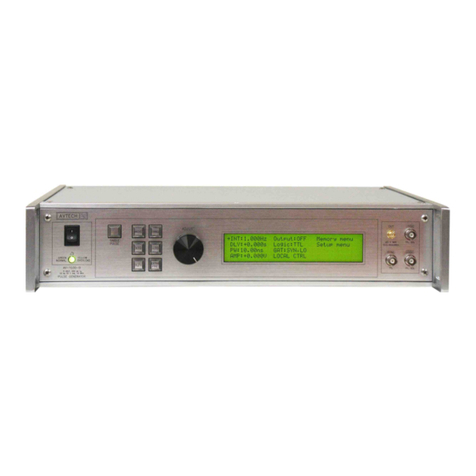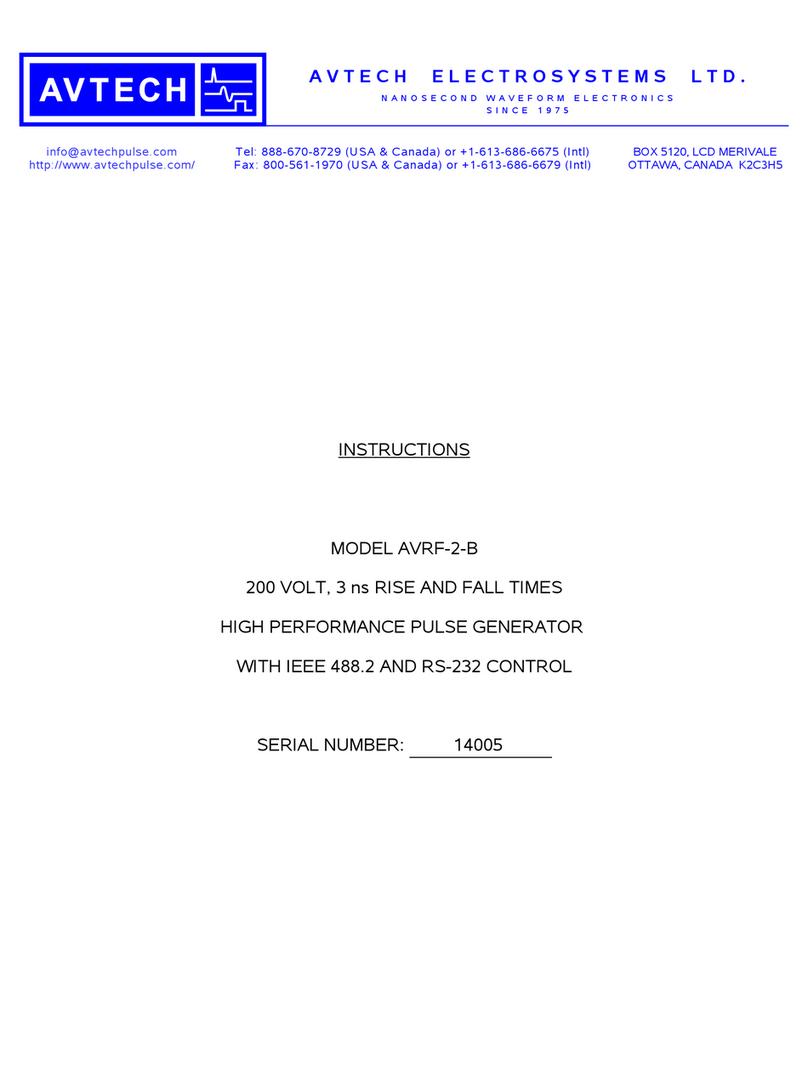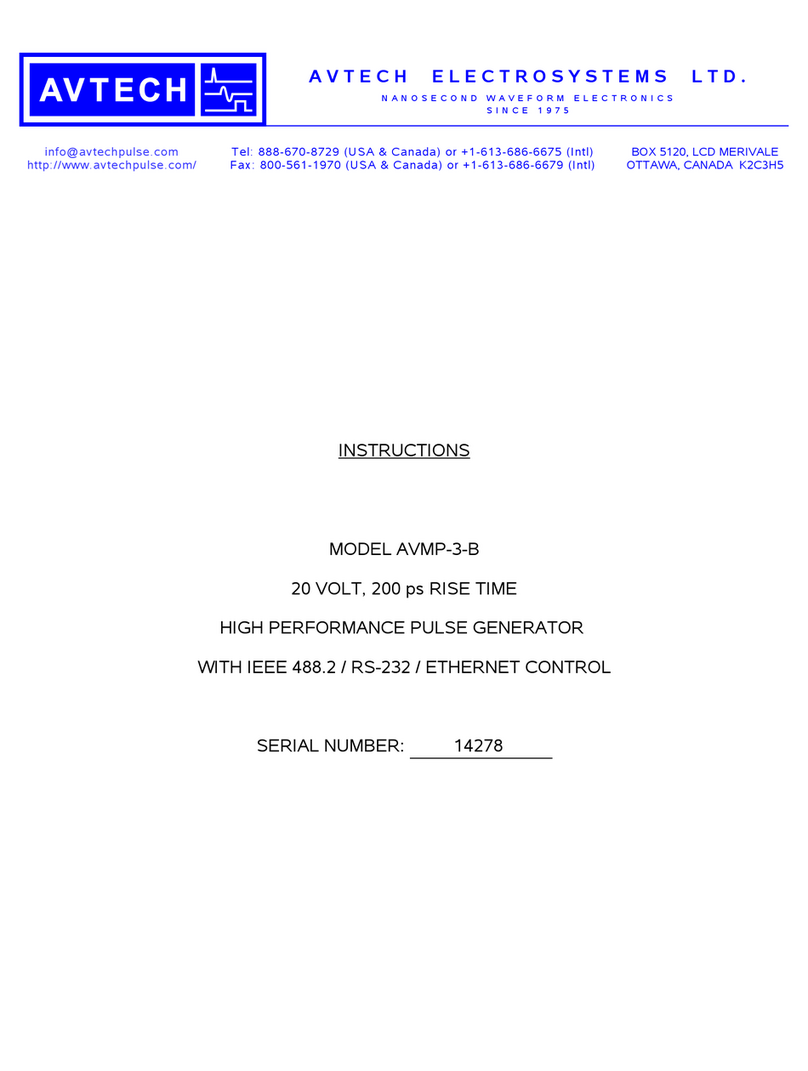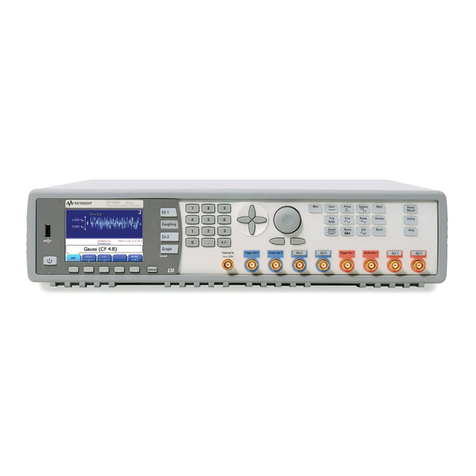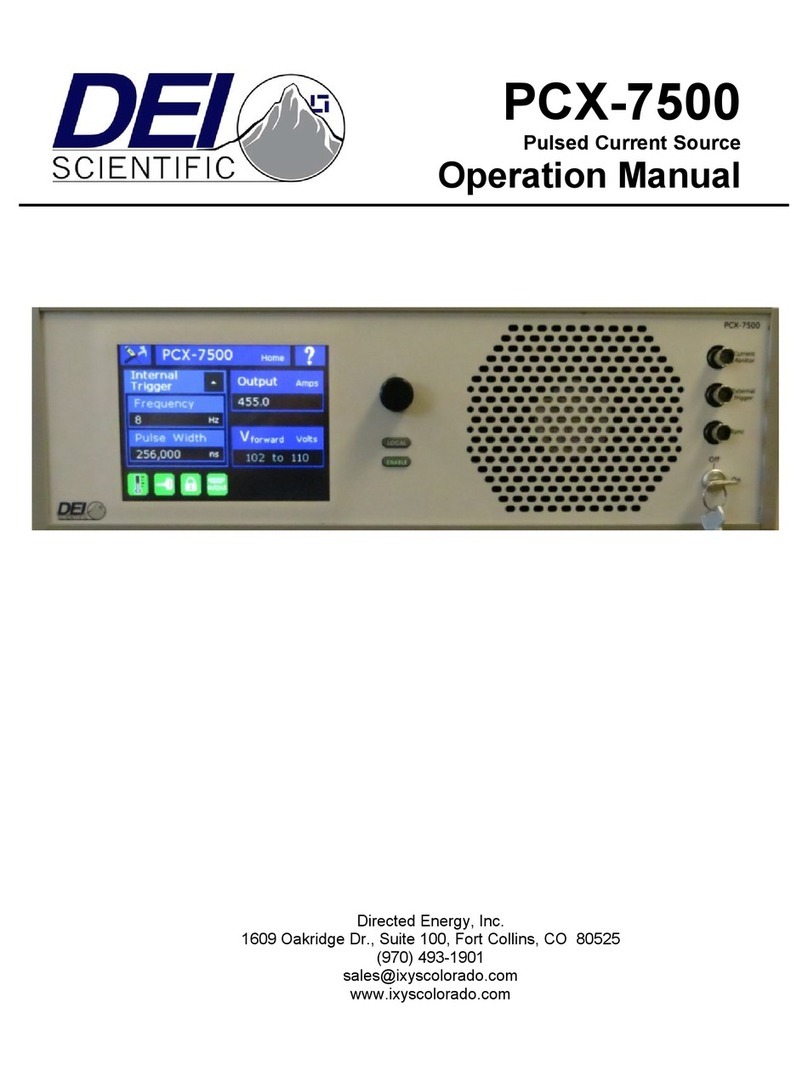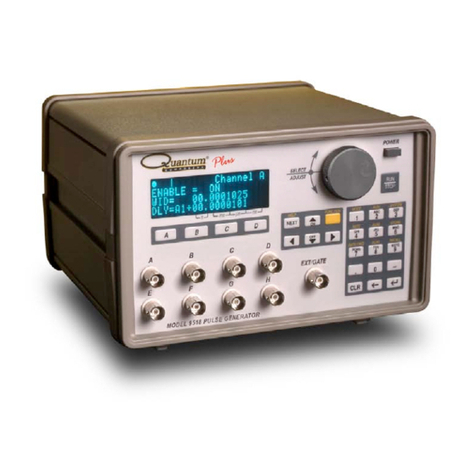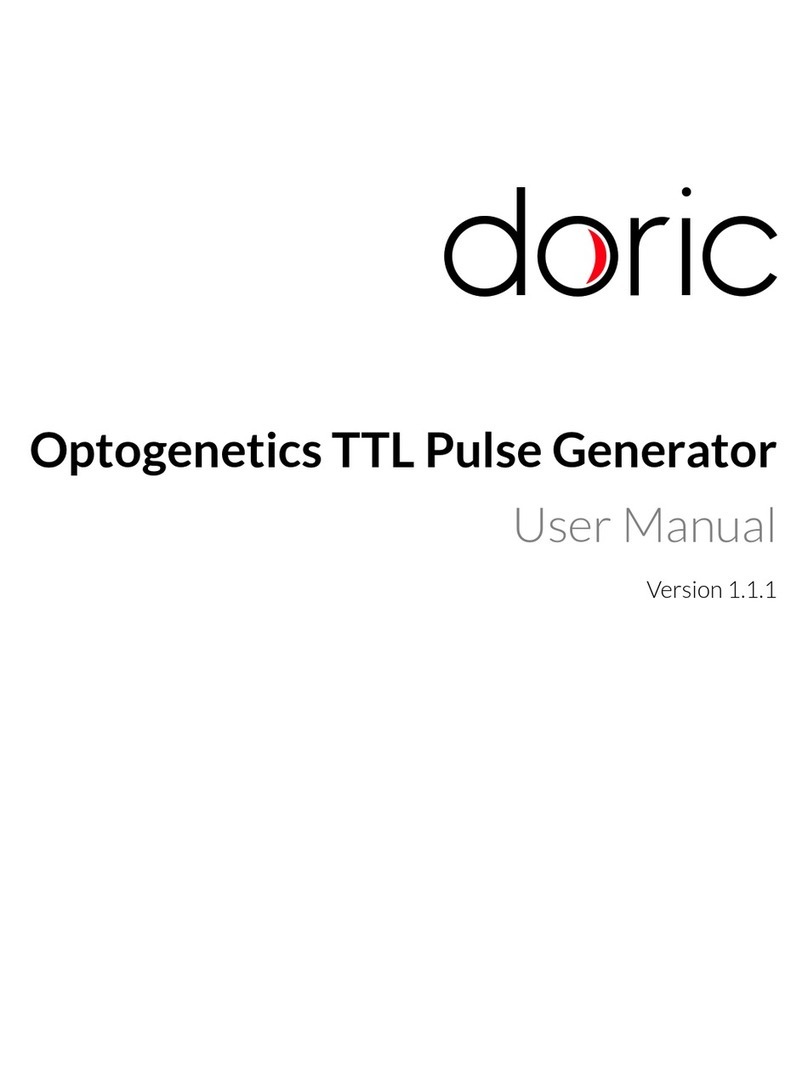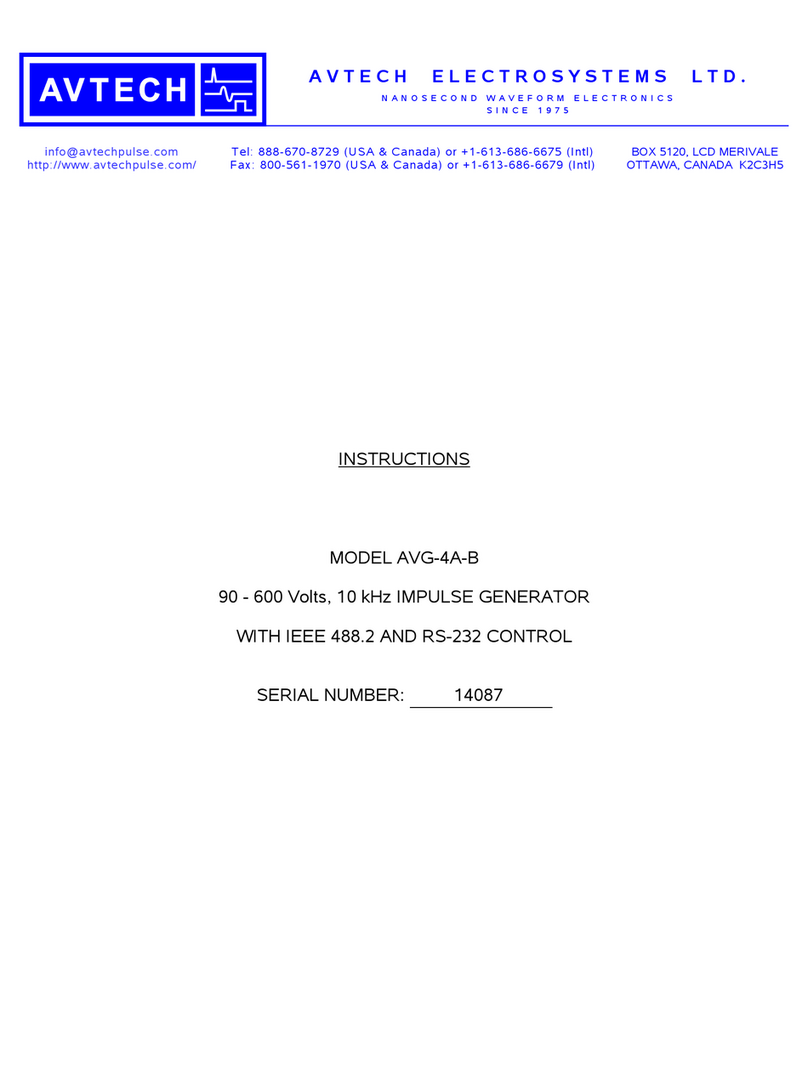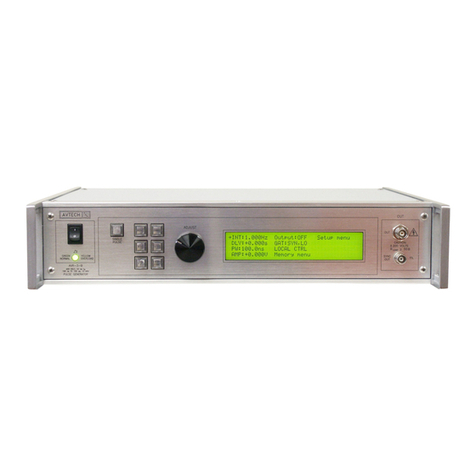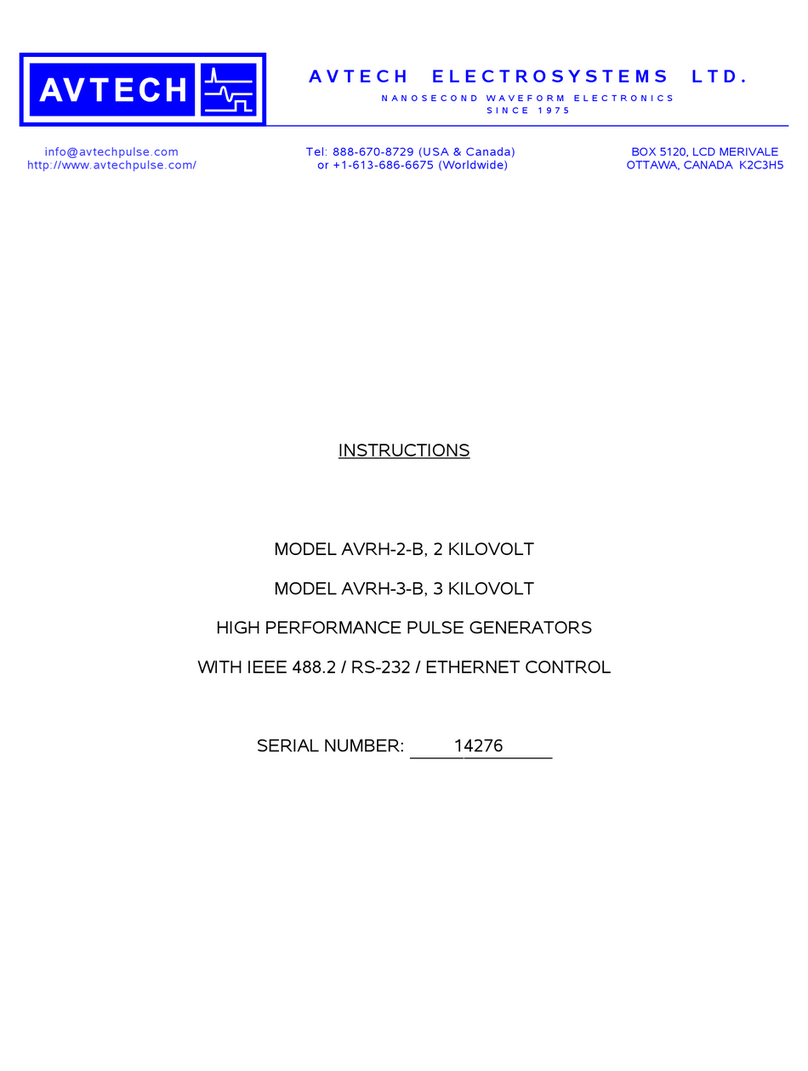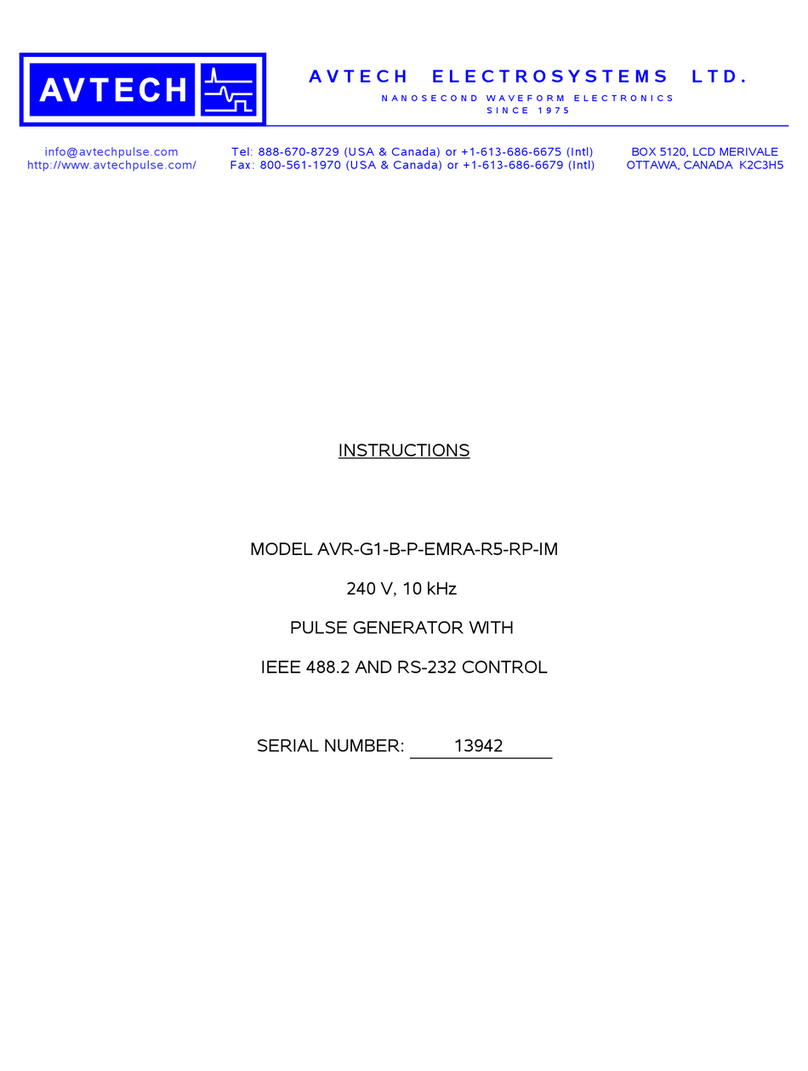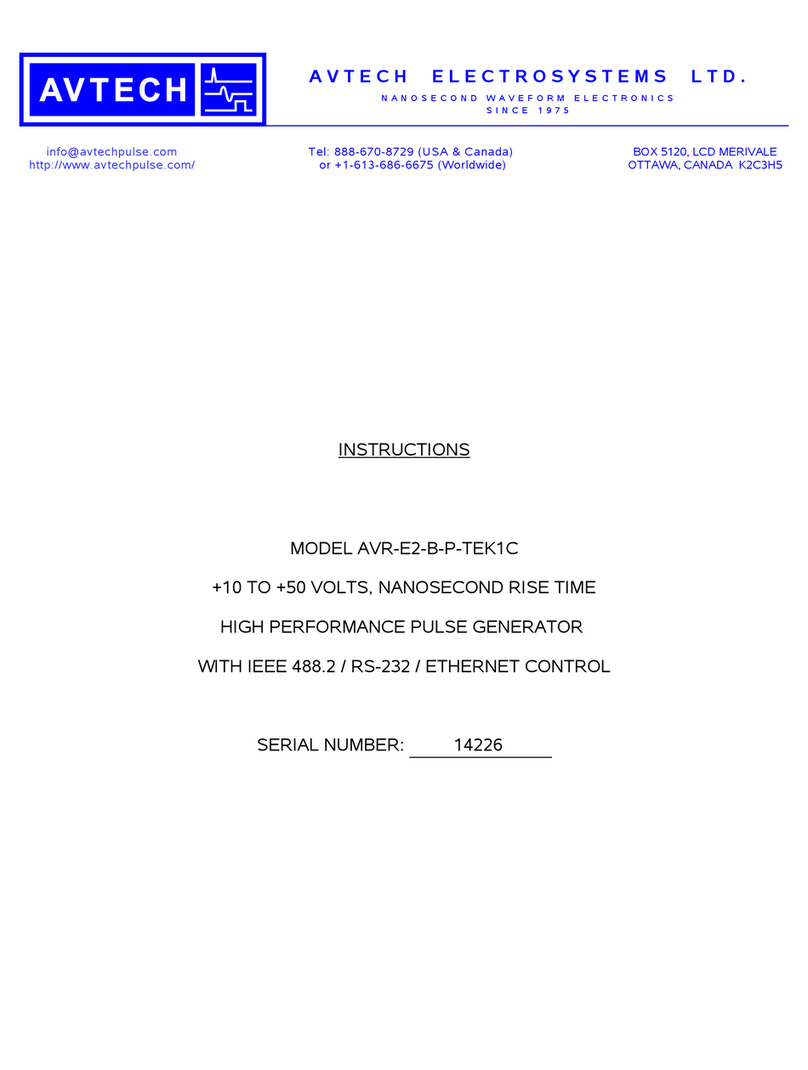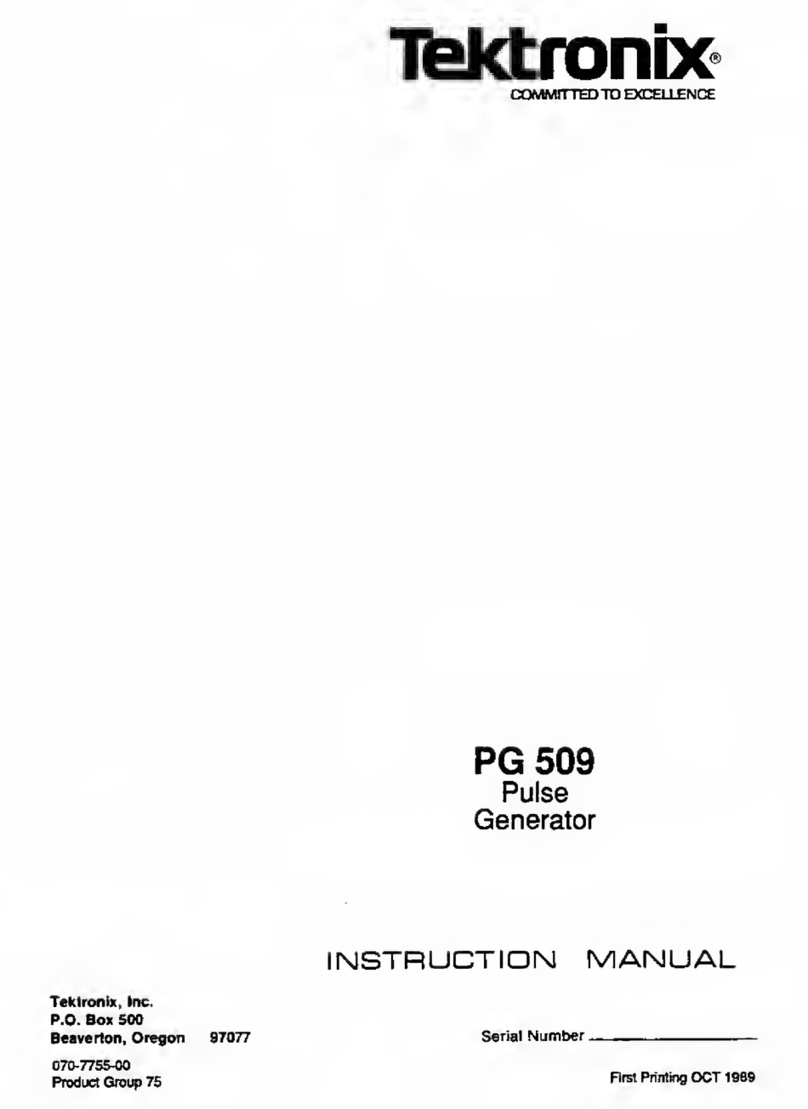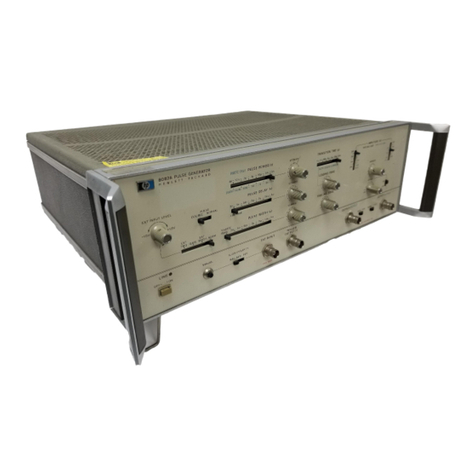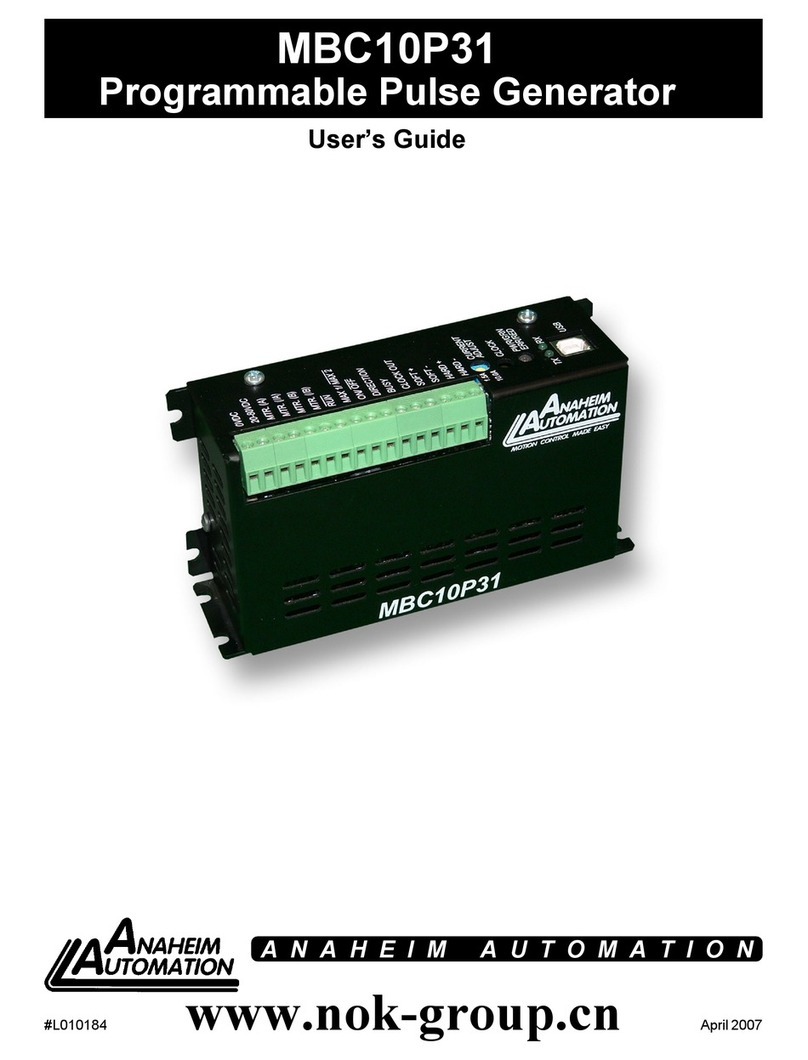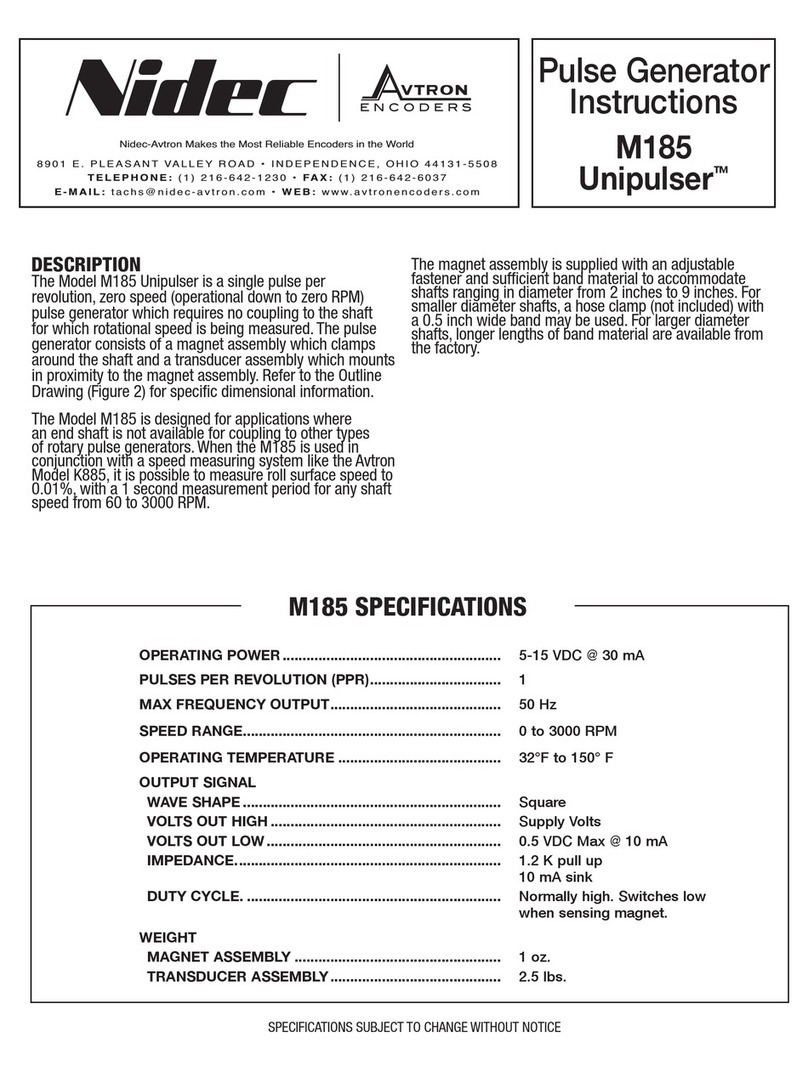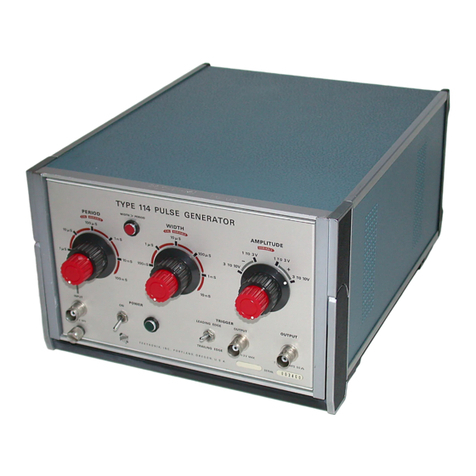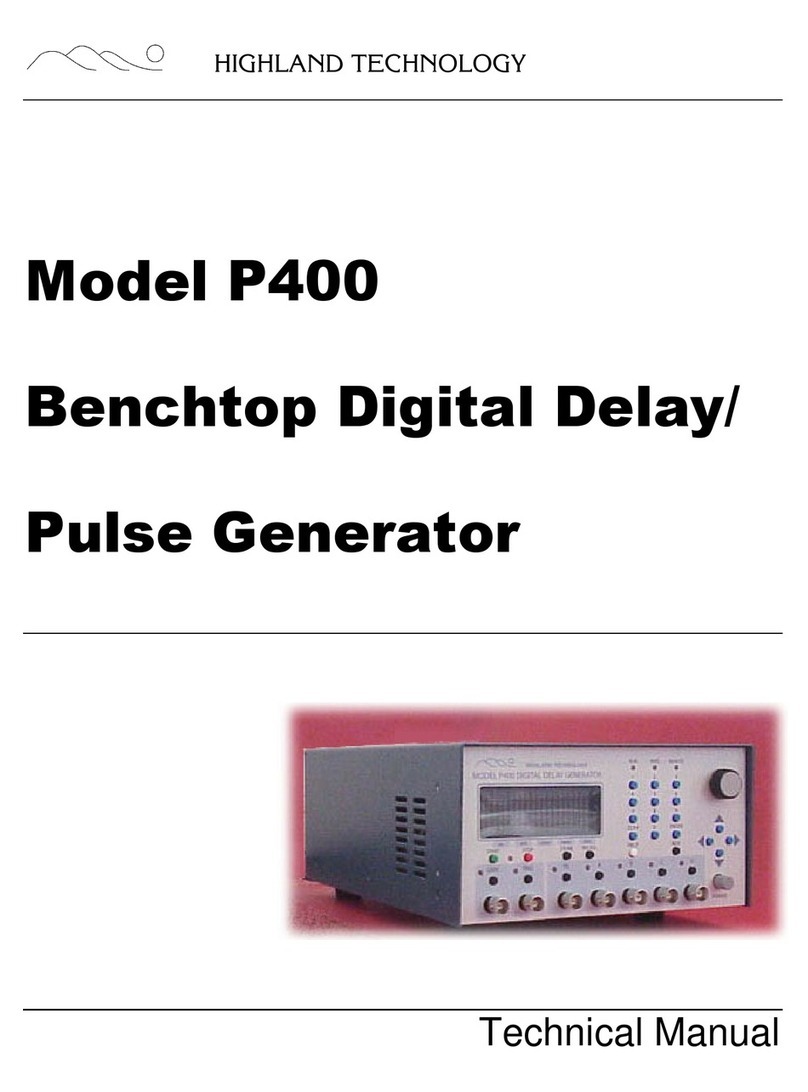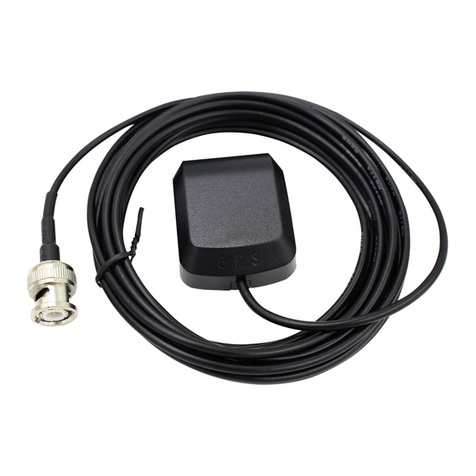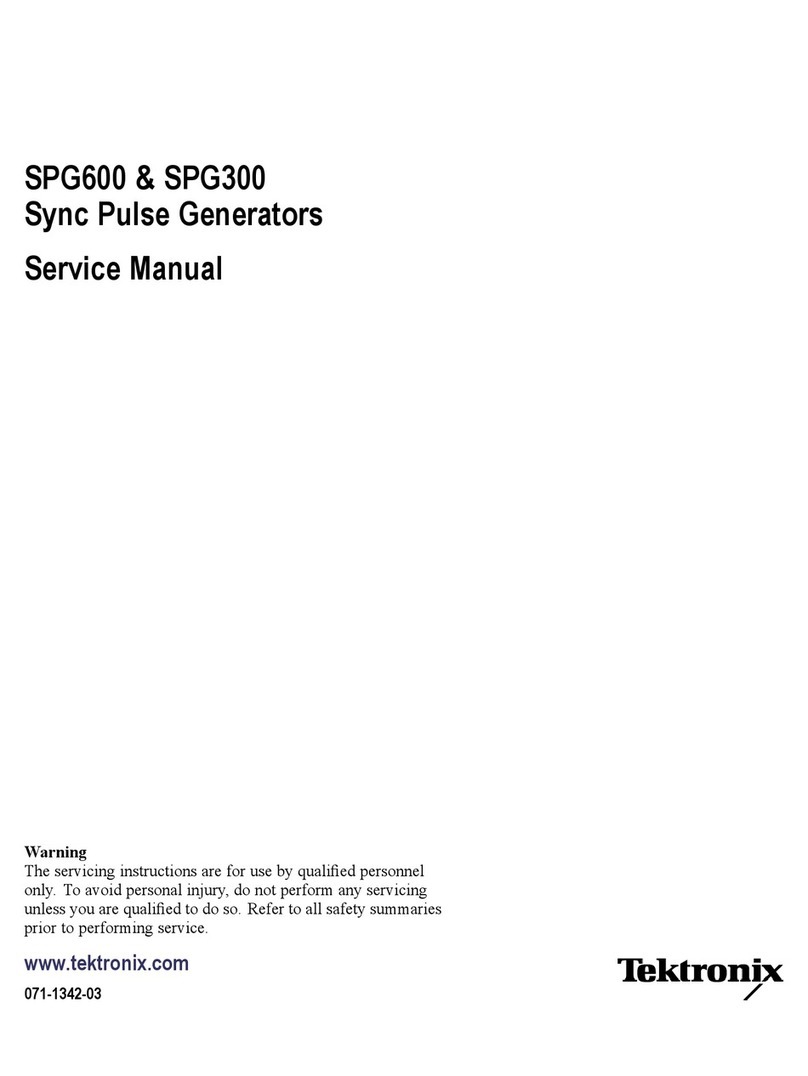SPECIFICATIONS
Model: AVP-AV-HV3-B2
Maximum amplitude3,4,6,14: < 4 to 40 V9
Pulse width (FWHM)3: 0.4 - 2 ns std. (0.4 - 4 ns opt11)
PRF: 1 Hz to 1 MHz
Rise time (20%-80%)6: ≤ 150 ps
Fall time (80%-20%)6: ≤ 300 ps11
Polarity: Specify -P, -N, -PN
Dual-Polarity Option Style: One output, with switchable polarity.
Required load impedance: 50 Ohms10
GPIB and RS-232 control2: Yes (standard on -B units)
LabView Drivers: Check http: www.avtechpulse.com labview for downloads
Ethernet port, for remote control
using VXI-11.3, ssh, telnet, & web:
Included. Recommended as a modern alternative to GPIB RS-232.
See http: www.avtechpulse.com options vxi for details.
Settings resolution (-B units): The resolution of the timing parameters (pulse width, delay, period) varies, but is always better than 0.15% of (|set
value| + 20 ns). The amplitude resolution is < 0.1% of the maximum amplitude.
Accuracy calibration: Not calibrated. At lower pulse widths and higher PRFs, the amplitude tends to roll off relative to the set value.
For high-accuracy applications requiring traceable calibration, verify the output with a calibrated oscilloscope.
Two channel option: Optional5
Double pulse option: Optional6. 0 to ±5 ns pulse separation (other ranges available).
Propagation delay: ≤ 200 ns13 (Ext trig in to pulse out)
Jitter, Ext trig in to pulse out: ± 35ps ± 0.015% of sync delay
Trigger modes: Internal trigger, external trigger (TTL level pulse, > 10 ns, 1 kΩ input impedance),
front-panel “Single Pulse” pushbutton, or single pulse trigger via computer command
Variable delay: Sync to main out: 0 to 1.0 seconds, for all trigger modes (including external trigger).
Sync output: +3 Volts, > 50 ns, will drive 50 Ohm loads
DC offset or bias insertion: Optional7. Apply required DC offset or bias in the range of ± 50V (250 mA max) to back panel solder terminal.
Monitor output option8: Provides a 20 dB (x10) attenuated coincident replica of main output
Connectors: Out, Monitor: SMA. TRIG, SYNC, GATE (-B only): BNC
Optional accessory kit: (attenuators
and terminators)
Add the suffix "-AK1" to the model number to include the recommended accessory kit. Consists of
three SMA, 18 GHz, 2 Watt attenuators (10, 20 & 30 dB) for use on the output, and two 50 Ohm,
1 GHz, 1 Watt feed-through terminators (one SMA, one BNC) for use on external trigger inputs.
Optional accessory kit:
(coaxial cables and adapters)
Add the suffix "-AK8" to the model number to include the recommended accessory kit.
Consists of one 12-inch SMA-M SMA-M PE-SR405FL coaxial cable, one 12-inch SMA-M SMA-M RG-316 coaxial
cable, one 36-inch SMA-M SMA-M RG-316 coaxial cable, one 24-inch SMA-M BNC-M RG-316 coaxial cable,
one 36-inch BNC-M BNC-M RG58C U coaxial cable, one SMA-F to BNC-M adapter, one SMA-M to BNC-F
adapter, one SMA-F to SMA-F adapter, and one SMA-F to solder cup adapter
Temperature range: +5°C to +40°C
Power requirements: 100 - 240 Volts, 50 - 60 Hz
Dimensions: 100 × 430 × 375 mm (3.9” × 17” × 14.8”)
Chassis material: Aluminum, with vinyl trim
1) -C suffix indicates stand-alone lab instrument with internal clock and line powering. No suffix indicates miniature module requiring DC power and external
trigger. (See http: www.avtechpulse.com formats for details of the four basic instrument formats).
2) -B suffix indicates IEEE-488.2 GPIB and RS-232 control of amplitude, pulse width, PRF and delay (See http: www.avtechpulse.com gpib).
3) For analog electronic control (0 to +10V) of amplitude, pulse width or DC offset suffix model number with -EA or -EW or -EO. Electronic control units also
include standard front-panel controls.
4) For operation at amplitudes of less than 20% of full-scale, best results will be obtained by setting the amplitude near full-scale and using external attenuators on
the output.
5) For the two channel option, add the suffix -2CHPP for two positive outputs, the suffix -2CHNN for two negative outputs, the suffix -2CHPN for the one positive
output and one negative output, or -2CHX for two outputs with independently switchable polarities.
6) For the double pulse option add the suffix -DPP for a unipolar output, and add the suffix -DPN for a bipolar output. These options cause the maximum
amplitude to be reduced by 30%, and increase the rise and fall times by 50 ps.
7) For externally applied DC offset option suffix model number with -OS. The Avtech AVX-T bias tee can also be used to obtain DC offset. For internally generated
DC offset option (0 to ±5V) add the suffix -OT to the model number.
8) For monitor option add suffix -M.
9) At maximum pulse width. The maximum amplitude may fall for narrower pulse widths, with reduction of < 25% at the minimum specified pulse width.
10)
A 50 Ohm load is requi
red. Other loads may damage
the instrument. Consult Avte
ch (
[email protected]) if you nee
d to drive other load i
mpedances.
11) For 0.4 - 4 ns pulse width, suffix model number with -W4. Fall times increases to 450 ps for -W4 models.
12) For 0.3 - 4 ns pulse width, suffix model number with -W5.
13) Add 200 ns to propagation delay specification for units with the -DPP, -DPN,
-2CHPP, -2CHPN, -2CHNN, or -2CHX options.
14) The amplitude on -C units is normally controlled by a one-turn dial. It may be replaced with a ten-turn dial by specifying the -AT option.
